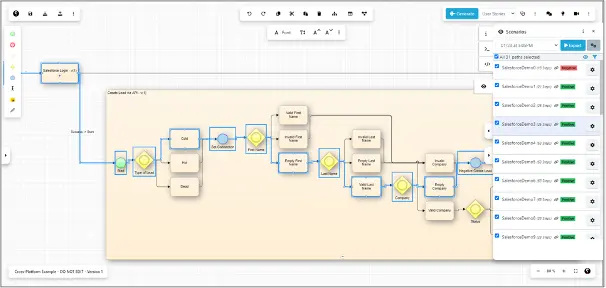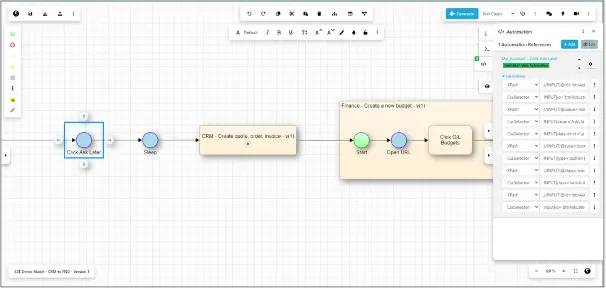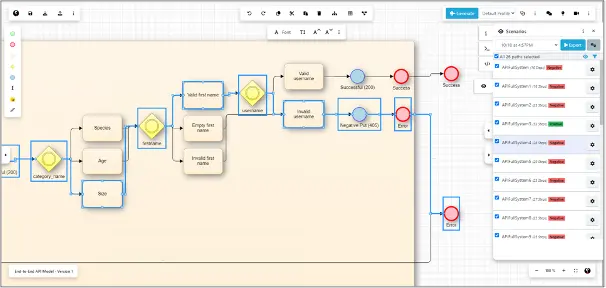
As we approach another EuroSTAR in Stockholm, many of us in IT and testing are reflecting on how we can improve our processes and strategies. It will be halfway through 2024, a time of year when doubts and concerns can creep in about our testing goals and improvements.
As you review your software quality strategy, I’d like you to reconsider our impulse towards ever-increasing test automation. Are we falling into the trap of trying to eat faster to lose weight? By only accelerating our efforts, we fail to confront the real root causes of testing inefficiencies and bugs.
You can’t automate quality into software
Just as diet fads promise thinness through gimmicks, we’ve been sold a fantasy. It promises us that more test automation will solve all our quality problems. But, while judicious automation provides value, many teams over-invest in automation at the cost of broader quality blockers.
When you have a hammer, everything looks like a nail, so teams hammer away endlessly to construct vast automated architectures. Meanwhile, quality lingers at the same mediocre levels.
10 Software Quality Issues to Address at EuroSTAR 2024
A common set of fundamental issues plague software projects. Teams often cite problems like:
- Confidence and Stability – Frequent defects erode trust in releases
- Defects into Production – Poor protection of live environments
- Insufficient Test Time – Perpetual last minute “hardenings”
- Release Uncertainty – Go/no-go decisions go down to the wire
- Failing Requirements – Poorly defined scope leads to endless clarifications
- Developer Rework – High levels of unplanned work
- Team Misalignment – Lack of transparency across functional groups
- Knowledge Silos – Bottlenecks form around key people or tools
- Bloated Testing – Massive, unwieldy automation suites requiring heavy maintenance
- Technical debt – Volumes of (re)work build over time, with insufficient knowledge to tackle it
Rather than focus on accelerating test execution speed, we need to confront why these problems arise in the first place. Increasing execution automation acts as a bandage; quality gaps stem from deeper process and strategy issues.
From silver bullets to software quality
At EuroSTAR 2024, let’s resolve to understand these root causes and thoughtfully solve them. For example, what drives unstable requirements? Is our analysis happening too late? What drives last minute surprises? Are we integrating and testing incrementally? Do our teams have transparency to coordinate their efforts? Are our tools and environments configured efficiently?
Thoughtful process analysis and improvement is less flashy than automation. Yet, it is far more impactful. Techniques like value stream mapping can uncover waste and barriers. Then, we can apply lean principles like limiting work in progress, optimizing flow, and amplifying feedback loops.
Rather than mindlessly generate more test cases, we should carefully curate automated checks to maximise value. Shifting left helps prevent defects, while good pipelines and test data strategies better isolate changes to fail fast. Teams skilled in exploratory testing and bug advocacy can further spotlight weaknesses early.

A measured (and measurable) approach to software quality
Let’s ring in EuroSTAR 2024 with renewed discipline against reactive thinking. Measure first, understand next, then optimize sustainably. Partner with stakeholders to align priorities. Anchor automation in business needs, not false promises of all-encompassing test suites. Spend smart to conserve budget for high-impact interventions.
Test excellence comes not from hasty automation, but thoughtful rigor, transparency, and accountability. Progress may seem slower, but leads to stable, high-velocity teams. Development, testing, and operations must come together as one delivery team sharing data, tools, and practices.
By taking a measured, evidence-based approach, we can target the disease rather than just treat the symptoms. Just as sustainable diets come from lifestyle changes, let’s commit to curing our quality ills through systems thinking.
This year, at EuroSTAR, let’s fix the fundamentals. Our automation will still be there to serve us, at sustainable velocities and capacities serving downstream needs. Set aside reactionary tactics, and instead bank quality through proactive strategies. Another EuroSTAR brings new perspectives, if we remain open to self-reflection and growth.
Restoring Confidence and Alignment with Curiosity Modeller
I speak to many organizations who experience the recurring quality issues and process misalignments discussed in this blog, each eroding their release confidence.
These challenges all have common roots:
1. Lack of transparency;
2. Incomplete system comprehension;
3. Inadequate feedback loops;
4. Unconnected teams.
Too often software gets built fast then tested slow. Teams lack shared artifacts to capture decisions and expected behaviours, undermining unified understanding.
Curiosity Modeller tackles these systemic issues by making system behaviour explicit early through collaborative models. These living models form the core artifact driving understanding, alignment and test generation.
Curiosity Modeller restores confidence and release quality by:
- Visualizing expected functionality clearly across groups – no more hidden assumptions or differing interpretations of requirements.
- Auto-generating optimal test cases to validate actual vs intended behaviour – preventing defects via early testing and signalling.

- Producing regenerative tests tied directly to the models – no more realigning stale regression suites or maintaining copious test automation artifacts.
- Enabling behaviour simulation for rapid prototyping – failing fast to prevent downstream rework.
- Integrating with test execution and auto-generating Test Automation – overcoming misalignment, endless maintenance and skills silos.

- Supporting API testing to safely exercise business logic – going beyond fragile end user flows.

- Generating high-value test data to focus coverage on key scenarios – informed by risk models.
Shift left to deliver quality
Instead of intensifying downstream testing, Curiosity Modeller shines a light starting left in the lifecycle. Visual flows form the central artifact aligning groups on system behaviour, while preventing defects before code gets written. This proactive approach restores trust, accelerates releases, facilitates coordination and uplifts quality engineering. It delivers confidence through deep comprehension.
Find us at EuroSTAR 2024!
The Curiosity team will be in the EuroSTAR Expo hall in Stockholm – drop by to discuss how you can build software confidence early and throughout your delivery pipeline. Before then, why not head to our website to learn more about Curiosity Modeller, try it for yourself, and talk to us about your quality needs?
Author

Rich Jordan
Rich Jordan has spent the past 20 years leading change within the testing industry, primarily within Financial Services. He has led enterprise transformations and quality teams who have won awards in both Testing and DevOps categories. Rich has been an advocate of model-based test automation and test data innovation for over a decade, and joined Curiosity in November 2022.
Curiosity Software is an Exhibitor at EuroSTAR 2024, join us in Stockholm.